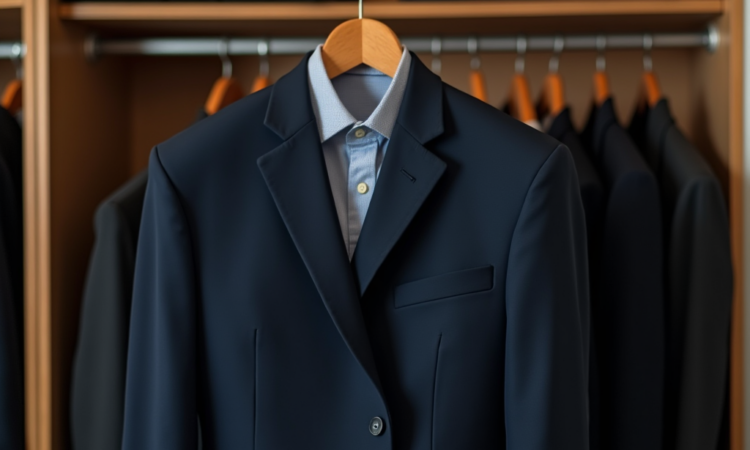When it comes to dressing well, the importance of a well-maintained suit or jacket cannot be overstated. These garments are not just articles of clothing; they are investments that can significantly affect your image. Just as you schedule regular maintenance for your car or home, the same level of care should be applied to your wardrobe. The right care ensures that these high-quality pieces stay looking sharp and sophisticated, extending their lifespan and saving you money in the long run. In this guide, we will delve into essential cleaning, storing, and maintenance tips tailored for suits and jackets. Let’s explore how to keep these timeless pieces in prime condition.
Cleaning your suits and jackets is paramount for preserving their appearance and overall fabric integrity. Regular cleaning can prevent dirt, oils, and odors from building up over time. Not only does this enhance the aesthetic appeal, but it also minimizes wear and tear. However, it’s essential to know when to opt for dry cleaning and when it’s safe to tackle the job at home. The various cleaning methods can greatly affect the fabric, leading to prolonged use and a polished look.
Cleaning Your Suits and Jackets

The Importance of Regular Cleaning
Every time you wear a suit or jacket, you’re exposing it to environmental pollutants, sweat, and even food particles. Consequently, a cleaning routine is vital. On average, you should dry clean a suit after approximately five to six wears. However, this can vary depending on the fabric and if any stains are present. Observing these guidelines helps to maintain the clarity of colors and patterns, ensuring that your garments remain vibrant over time. If neglected, dirt can build up, leading to unpleasant odors and fabric degradation.
Choosing Between Dry Cleaning and Home Cleaning
Deciding between dry cleaning and home cleaning can depend on various factors, including fabric type, duration of wear, and visible stains.
| Cleaning Method | Best For |
|---|---|
| Dry Cleaning | Heavier fabrics, special occasions, visible stains |
| Home Cleaning | Light dirt, freshness between wears |
Home Cleaning Techniques
For those who prefer a hands-on approach, several effective home cleaning techniques exist that can keep your garments looking presentable. These methods are gentler and allow for interim maintenance. Consider these tips:
- Spot-cleaning stains with a damp cloth to lift marks without deep cleaning.
- Using a fabric brush to regularly remove lint and dust.
- Refreshing garments with steam can relax wrinkles without direct heat.
Proper Storage Techniques

How you store your suits and jackets plays a significant role in their longevity. Choosing the right method—hanging or folding—can drastically affect their structure and fabric integrity. If hanging, be sure to use wide, padded hangers which help maintain the natural shoulder shape. Folding is often better for delicate fabrics or jackets that are at risk of losing their form. Regardless of the method selected, it’s crucial to keep these pieces in optimal conditions.
During off-seasons, additional precautions can preserve fabric quality. Using appropriate storage techniques can safeguard your garments from dust accumulation and potential damage. Follow these essential tips:
- Utilize breathable garment bags to promote airflow and prevent moisture buildup.
- Incorporate cedar chips or lavender sachets to repel moths and maintain freshness.
- Avoid over-packing your closet to reduce the chances of creasing and damage.
Maintaining Your Garments
Regular Inspections
An essential aspect of garment care is the routine inspection of your suits and jackets. Checking for loose threads, missing buttons, and unraveled seams can save you from more extensive repairs down the line. By catching minor issues early, you can ensure that your garments remain in excellent condition. This proactive approach fosters a sense of responsibility not only toward your wardrobe but also towards your overall appearance. Additionally, maintaining a checklist for inspections can simplify this process.
Minor Repairs You Can Do Yourself
Being handy with a needle and thread can be a game-changer for a suit or jacket wardrobe. Minor repairs can often be handled at home, freeing you from the hassle of frequent tailor visits. Here are some simple repairs you can consider:
- Sewing loose buttons back on to avoid losing them entirely.
- Fixing minor seam issues, which can easily be mended with basic sewing skills.
- Reinforcing worn areas to prevent more serious damage later on.
Conclusion
Taking the time to care for your suits and jackets is an investment in your style and confidence. By implementing a systematic approach to cleaning, storing, and maintaining these garments, you can ensure they look as sharp as the day you bought them. Regular inspections, proper storage techniques, and knowing when to opt for professional cleaning will all extend the life of your investments. Embracing these practices not only preserves your appearance but can also enhance your overall wardrobe experience.
Frequently Asked Questions
- How often should I dry clean my suit? It’s recommended to dry clean your suit after every 5-6 wears unless it has visible stains that need immediate attention.
- Can I machine wash my jacket? It depends on the fabric. Always check the care label; if it suggests hand washing only, opt for that to preserve the quality.
- What’s the best way to remove wrinkles from my suit? The best method is to use steam. Hang the suit and gently steam it to relax the fabric without causing damage.
- How should I store my suit during the off-season? Use a breathable garment bag and store it in a cool, dry place away from direct sunlight.
- Is it necessary to have my suit tailored? Yes, a tailored fit can enhance the overall look. Even slight adjustments can make a significant difference in appearance.
